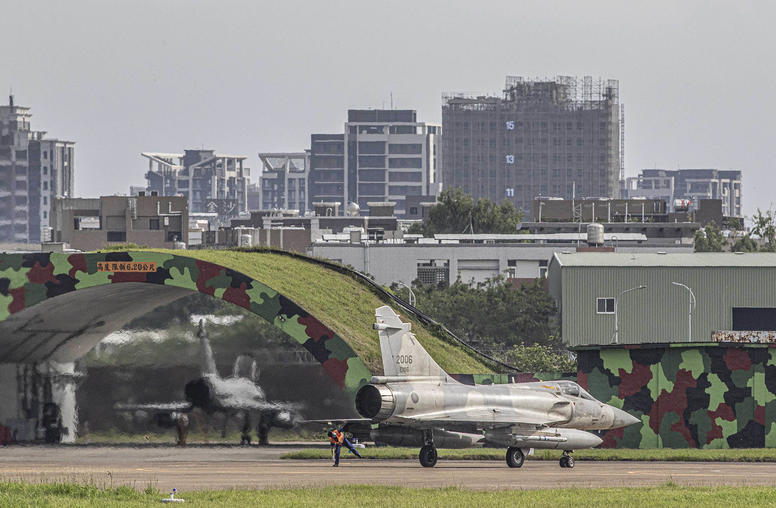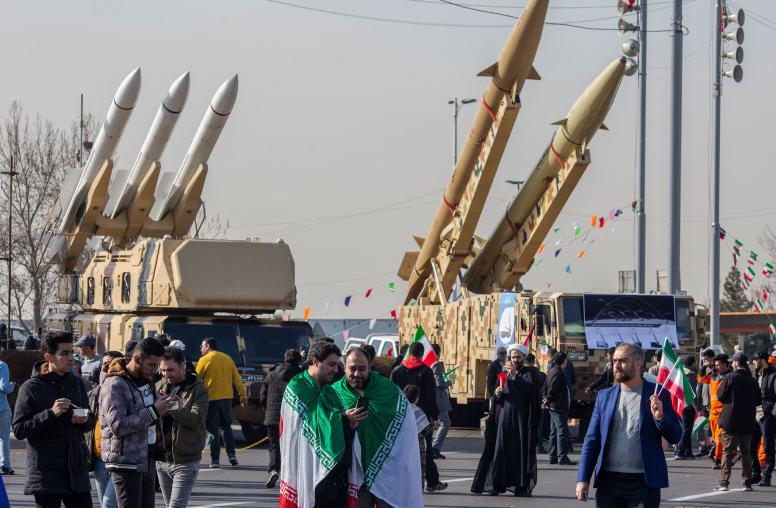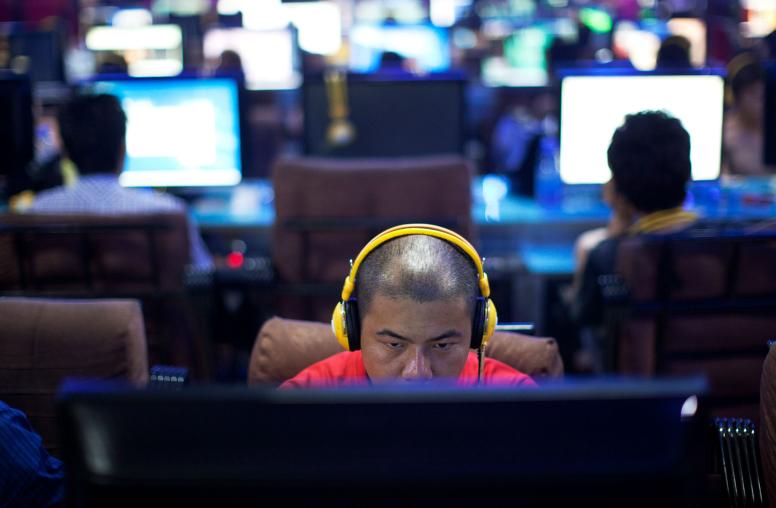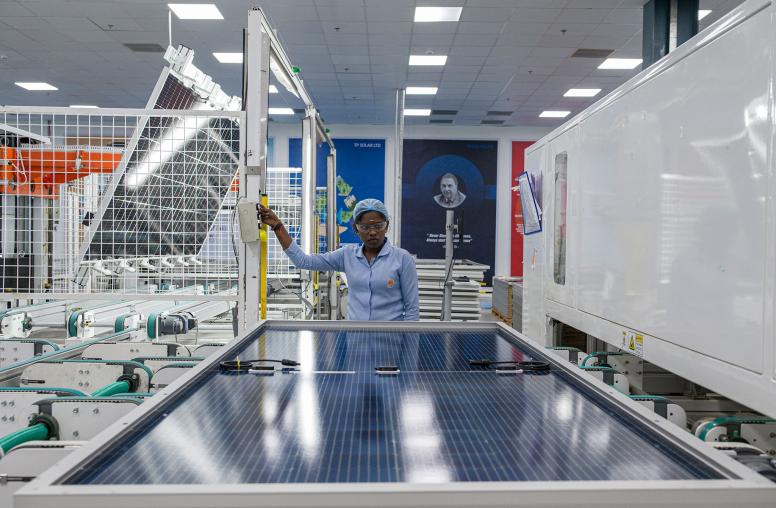Despite Beijing’s Threats, Hong Kong Protesters Remain Unbowed
How will Chinese leaders respond to the growing movement and what can the U.S. do?
Hong Kong saw another massive rally on Sunday, with an estimated 1.7 million pro-democracy protesters taking to the streets. So far, China’s response to the protests, which started in June over a proposed bill that would have allowed extradition to mainland China, has largely consisted of a disinformation campaign and support for the Hong Kong police, which have engaged in violent beatings, extensive use of tear gas, and firing of rubber bullets to clamp down on the protesters. USIP experts discuss how the situation has evolved, the potential of Beijing conducting a violent crackdown, what the international community’s response would be, and what the U.S. can do.

How has the situation in Hong Kong evolved over the last month?
Since protesters stormed the Hong Kong Legislative Council building on July 2, the situation has escalated beyond just a call for withdrawal of the proposed extradition bill. The movement represents deeper grievances toward the Hong Kong government and its dependence on Beijing. Among other things, the protesters are calling for the release of arrested individuals, the resignation of Chief Executive Carrie Lam, universal suffrage, and an independent investigation into police brutality. Despite violent repression from local police and the risk of a more extreme intervention from Beijing, the movement has been largely peaceful in nature—though violent flanks have emerged at times—and protesters have refused to back down, despite the risk of a more extreme intervention from Beijing. What began as largely youth-led rallies have expanded to involve people from across Hong Kong society.
The protests have had far-reaching social and financial ramifications. The mass sit-in protests in the Hong Kong International Airport led to the cancellation of all flights for two days. More than two million people (over a quarter of Hong Kong’s population) are reported to have participated in the protests, which have led to hundreds of arrests, injuries, and a number of suicide deaths. Yet despite this repression, the number of people mobilizing in the streets has remained largely consistent, indicating that Hong Kongers believe that potential democratic gains outweigh the risks.
Beijing and Washington have heightened their rhetoric over Hong Kong, with bipartisan U.S. congressional support for the protesters contrasted with Beijing’s sharp criticism. Beijing has ramped up an international disinformation campaign encouraging confusion over the nature of the protests, and has pressured corporations, such as the major airline Cathay Pacific, to prevent their employees’ participation in the protests.
What similarities are there to the pro-democracy protests happening in Moscow now?
The two situations differ in numerous ways—for example, Moscow is Russia's capital while Hong Kong is a nominally self-governed Special Administrative Region—but some similarities do exist. Protesters in both countries are standing up to powerful authoritarian governments who have demonstrated a willingness to use force against them. In both Hong Kong and Moscow, massive crowd sizes underscore the depth and breadth of citizens’ grievances. The two movements appear to have expanded well beyond activist circles to bring citizens into the streets who might not normally rally. In addition, both movements have sustained protests over the course of many weeks, a signal to both governments of their commitment.
The protests in Hong Kong and Moscow both have proximate causes—for Hong Kong a proposed extradition bill, and for Moscow the government barring opposition candidates from running for city council—but have broadened into wider indictments of the regimes. Also, both sets of protesters have found ways to organize digitally in online environments that are closely monitored and heavily censored. They are also taking steps to circumvent advanced surveillance tools such as facial recognition. The Chinese and Russian governments seek to blame foreign actors—primarily the United States—for allegedly stirring up protests. The goal of those accusations is to undermine the protesters’ legitimacy. Chinese and Russian leaders also plan to coordinate and exchange information on how to thwart that supposed outside interference.
How has Beijing responded so far? What do you expect from China moving forward?
In the early weeks of the protests Beijing initially blocked news of them in the mainland, but after last week’s protests at the Hong Kong airport in which a reporter from the mainland was attacked, Beijing has changed tactics to condemn the protests in mainland media. A spokesman for the Hong Kong and Macao Affairs Office told reporters in Beijing last week that protesters’ actions “constitute serious violent crimes and have started to show signs of terrorism.”
Concerns are mounting that Beijing may violently crackdown on protesters. Just across the border, hundreds of People’s Armed Police personnel, responsible for internal security and riot control, conducted large-scale exercises at a sports stadium in Shenzhen, with the Chinese state media broadcasting ominous clips of paramilitary vehicles gathering in the area in a clear warning to the people of Hong Kong.
Under the Garrison Law of Hong Kong, the Hong Kong government can request assistance from the central government in Beijing to send troops for assistance in the “maintenance of public order.” But Hong Kong police told reporters in a briefing last week that despite struggling in their response over the past weeks, they have now reorganized operations and are prepared to handle the situation on their own, without intervention from the mainland.
Beijing is unlikely to send troops into Hong Kong as long as local authorities keep the situation under control. While keeping forces ready across the border, Beijing can be expected to also focus on shaping the narrative in mainland and international media about the protest movement, criticizing any violent acts by the protesters as terrorism and evidence of influence of hostile foreign forces. Even if Beijing hopes to avoid military intervention in Hong Kong now, painting a picture of the protest movement as violent and destructive could help serve as justification for mainland intervention at a later date, even decades down the line.
What consequences would Beijing face if it were to take violent action on protesters?
Beijing’s words and actions have raised serious concerns about whether it will forcefully intervene in the protests as it did during the Tiananmen Square Protests in 1989, which resulted in hundreds, if not thousands, of civilian deaths and drew swift condemnation from countries around the world. At the time, the United States suspended military exchanges, foreign aid, arms sales and the sale of policing equipment to China. Many of these sanctions were lifted and relations restored based on the belief that China’s further integration into the global system, not isolation, would speed along progressive reforms.
If China were to take violent action in Hong Kong, it would again face condemnation and sanctions around the world, but with much less sympathy this time given growing disillusionment in many capitals (and at home) with its increasingly authoritarian turn under the leadership of Chinese President Xi Jinping. It would completely lose the trust of citizens in Hong Kong who were promised the right to “one country, two systems” and further convince the people of Taiwan that peaceful reunification or coexistence is truly out of reach. Such action would also increase threat perceptions of China around the world and destroy the image of China as a champion of peace and development that its leaders have tried so hard to promote. In short, Beijing would have the most to lose if it were to take such a route.
What can the U.S. do?
While U.S. influence on Hong Kong's situation is limited, it can emphasize to Beijing that a violent crackdown would have a major negative impact on bilateral relations and would catalyze a global reassessment about the nature of China’s rise. Understanding the cost of forceful repression ahead of time should make Beijing think twice about going further down that route.
Next, the United States should coordinate with its allies and partners and encourage them to convey similar messages to China, reflecting a global democratic consensus. Washington can also coordinate with allies to ensure solidarity protests in other countries can go forward without fear of harassment by Beijing’s supporters abroad. Several Australian cities have already seen scuffles and intimidation during local protests related to Hong Kong.
U.S. leaders could also warn Beijing that the use of force against protesters could be met with repeal of the 1992 Hong Kong Policy Act, which gives Hong Kong special trade status and has propelled the city’s role as a trade and finance hub. The basic message to Xi Jinping would be, if you negate the “one country, two systems” framework in practice, the United States will withdraw that status in law.
Finally, to support those protesting for greater democratic reforms in Hong Kong and elsewhere, the United States must objectively and consistently champion political freedom, democratic values and human rights at home and abroad. U.S. leaders should take care never to link or give the appearance of linking "concessions" on such issues to other unrelated bilateral matters, such as trade. Because doing so would only shore up the groundless but oft-repeated accusation by autocratic regimes that the United States and "foreign forces" are manipulating protesters to advance their own interests, and detract attention from the protesters' courageous cause.
Paul Lee is a program assistant for China and North Korea programs at the U.S. Institute of Peace.



